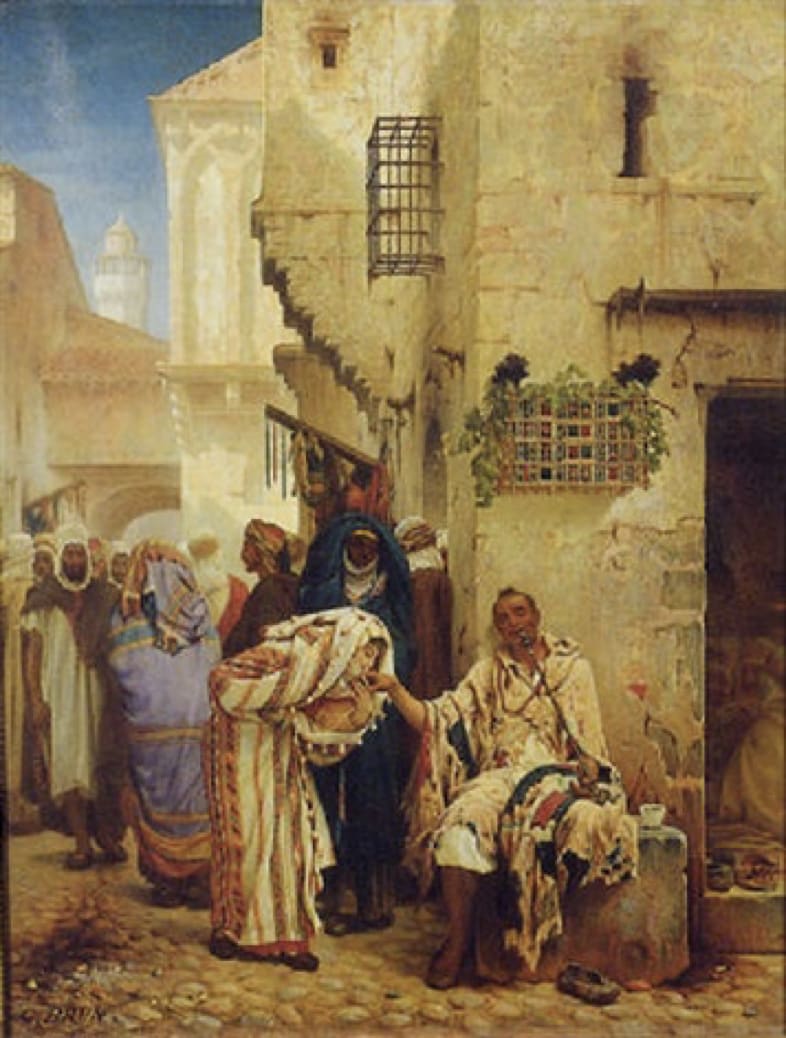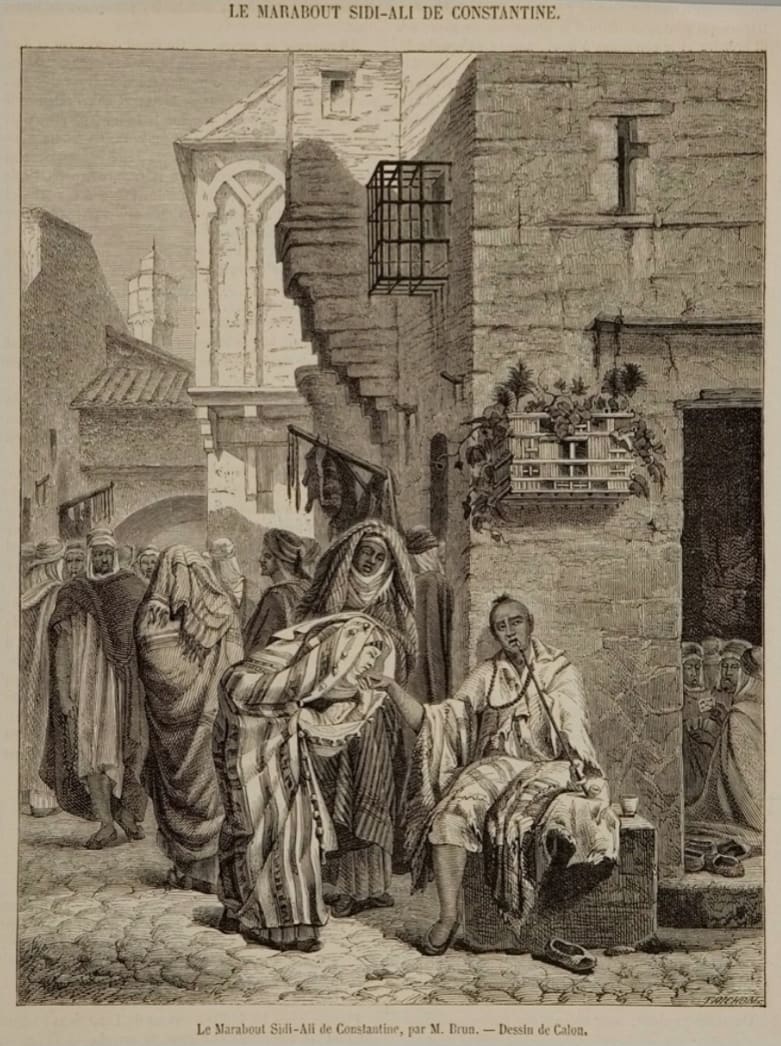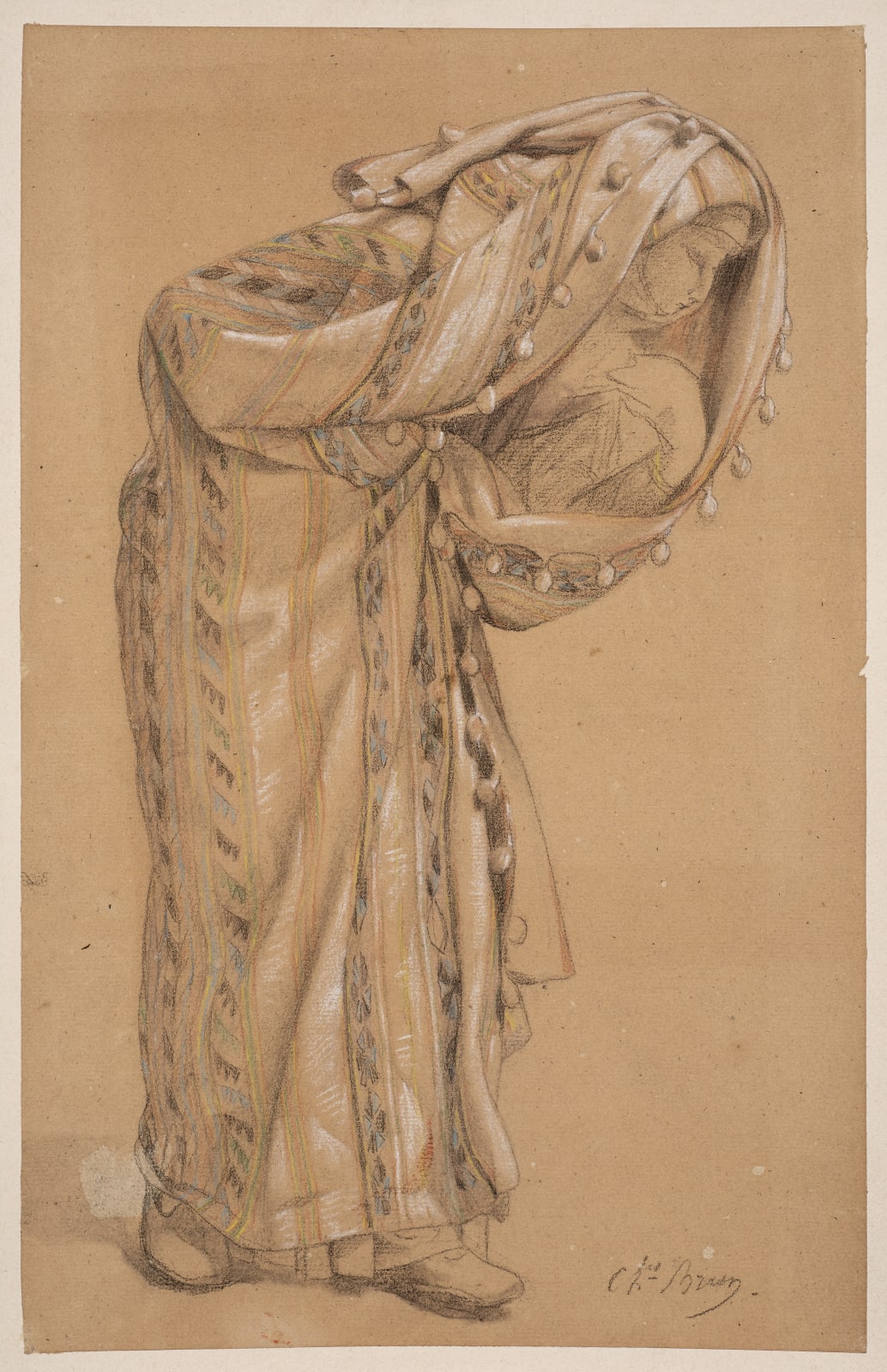Guillaume-Charles Brun (1825 - 1908)
Study for Le Marabout Sidi Ali de Constantine: a woman in a jibāb, bending forwards
Signed lower right: Ch. Brun
Coloured chalk on paper
32.5 x 20 cm. (12 ¾ x 7 ¾ in.)
Study for Le Marabout Sidi Ali de Constantine: a woman in a jibāb, bending forwards
Signed lower right: Ch. Brun
Coloured chalk on paper
32.5 x 20 cm. (12 ¾ x 7 ¾ in.)
Provenance:
By descent in the family of the artist until 2020.
This striking sheet, depicting a woman wearing a colourful and tasselled jibāb, is a study for Guillaume-Charles Brun’s 1863 painting Le Marabout Sidi Ali de Constantine, in a private collection (fig. 1). In the painting itself, the woman bends forward in a respectful way towards a marabout wearing tattered garments, taking his hand in hers; in reality a gesture unlikely to be witnessed in the Maghreb, or indeed the Islamic world in general. A marabout is a Quaranic scholar and teacher historically found in north Africa, who could take the form of wondering holy men, surviving on alms, as is the case with Brun’s figure, in his tattered garments. That Brun’s painting was well received is suggested by François-Auguste Trinchon’s engraving after it, an example of which can be found in the Fogg Museum, Harvard (fig. 2).

Fig. 1, Guillaume-Charles Brun, Le Marabout Sidi Ali de Constantine,
1863, oil on canvas, 88 x 63 cm, Private Collection
Born in Montpellier, like his friend Alexandre Cabanal, Brun went to Paris at the age of 22 and was accepted as a student at the École des Beaux-Arts in 1847, where he won a medal in the school’s exhibition of that year. Upon Cabanal’s recommendation, Brun joined the studio of François Picot, where his talents began to flourish, exhibiting regularly in the Salon from 1851 onwards, initially showing genre works and then, from 1853, more regularly Orientalist paintings. In 1859 Brun exhibited three paintings at the Salon depicting scenes from everyday life in Constantine, a city often preferred by the French artists who regretted the Europeanisation of Algiers and who sought out a more authentic vision of North Africa. From1 859 until the end of his life, images of the narrow, ancient streets of the city and its colourful inhabitants, often engaged in perhaps overly romanticised activities, became a theme of predilection for Brun, who was appointed President of the Société des artistes français in 1883.

Fig. 2, François-Auguste Trinchon, after Guillaume-Charles Brun,
Le Marabout Sidi Ali de Constantine, wood engraving,
Fogg Museum, Harvard
